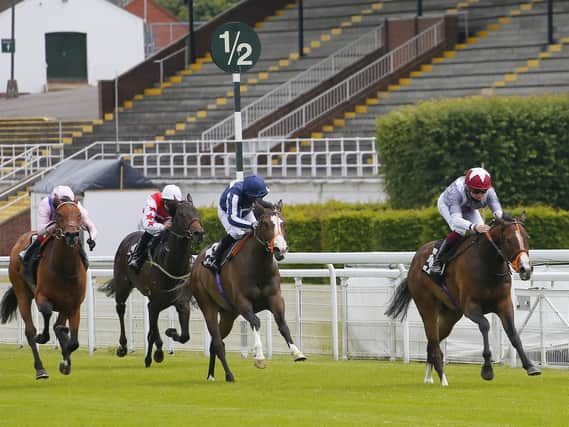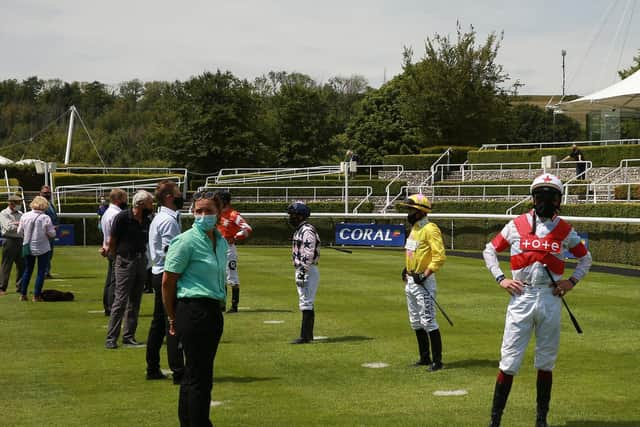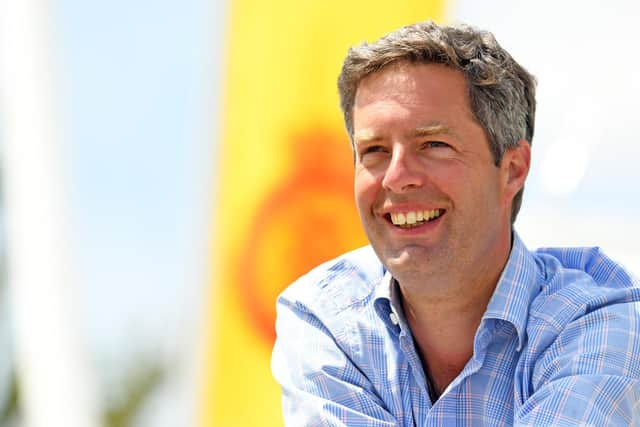Goodwood clerk of the course reveals what racecourse life is like in these strange times


I caught up with clerk of the course, Ed Arkell, to find out what’s it was like to be back in action and how new protocols were implemented throughout the first fixture of the season.
“It’s very good to be back up and running again - it’s a very odd, and a rather eery situation to be in," he said.
Advertisement
Hide AdAdvertisement
Hide Ad“The Sunday had quite a strange atmosphere to it. The Monday just seemed to be a little bit more relaxed and everybody was just a little bit jollier – but I suppose that was just because we’d all settled into it a little bit.


“There’s been a huge amount of work – particularly from Sarah Bullen, operations manager – who has done a phenomenal amount of work behind the scenes and on the planning.
“All sorts of things; like creating two-metre wide little booths for the jockeys in the changing rooms so they were appropriately social distanced, all the one-way systems through the weighing room and all the various equine areas – the same down in the stables.
Read Ed Arkell's thoughts on the build-up to Glorious Goodwood in the Chichester Observer this week - it's out on Thursday morning
Advertisement
Hide AdAdvertisement
Hide Ad“We still have to do everything we would do on a raceday – but by following both the government and British Horseracing Authority (BHA) guidelines.


“You can’t use very many of the wash-down areas because of the risk of spray contamination, wearing face masks, disinfecting all the saddling boxes between each race, all the starting stalls, water buckets – where the lads might have picked a water bucket up to wash a horse down. Everything had to be disinfected between each race.
“We had no horses coming into the winner’s enclosure – we brought the winning horse to a position in the parade ring where usually the fourth-placed horse would go to. It just gave everybody more space and allowed us to use the winner’s enclosure for more operational stuff – to run the one-way systems and do the tack exchange.
“Normally when the lads get to the yard with the horses – they put the horses into the stables and then come up to the racecourse with the colours bags and hand them in at the weighing room. Obviously, we couldn’t do that, so we were running up batches of colours bags and then having to do the transfer outside of the weighing room.
Advertisement
Hide AdAdvertisement
Hide Ad“Everybody who came on site had to have done the BHA online training course and then 72-hours before, everybody had to send in who was coming racing; from trainer or representative, to which lads were coming and the racecourse had to say which staff were coming and then BHA sent a health questionnaire to everybody that was on the list and – which you had to fill in and send back to them and that then generated the approval for you to come on course.
"When you arrived on course, you had to follow a one-way system where you we’re asked three additional questions and everybody had their temperatures taken.
“It’s not just knowing who is coming – you also have to have plans in case somebody fails. For example; if I failed a temperature test, there had to be somebody on the list available to come and stand in for me.
"They couldn’t just turn up – their name had to be on the list. I was the back-up clerk of the course for Newbury and Royal Ascot – the same as the doctors and vets had to have back-ups as we couldn’t run a meeting without them and we couldn’t not run because one person failed.
Advertisement
Hide AdAdvertisement
Hide Ad“I had a core team of ground staff in right the way through so we’ve managed to keep pretty well on top of the track – we have also brought people back from furlough as and when needed.
“We’ve all worked really hard. The team especially, having me out helping - or hindering – them.”
Read more from Ed Arkell on this website later in the week